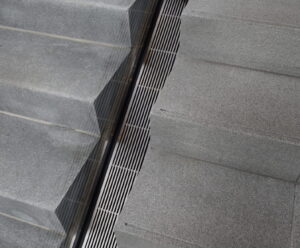Now most objects for our lives are created by industry. They are characterized by it: thus industry makes style … It is the fashion of our time. … What is industry’s formula? It is the exact reproduction of a perfect model in a great number. Industry’s strength lies in thoroughly and assiduously studying the model, and its potential to lead this study to never ending consecutive perfections with the help of all the powers of science, money, today’s techniques, and finally, artists.
~ Gio Ponti
Interior Design Research
Interior design elements are chiefly about the functional, the specific, and the personal. Interior design decisions are a response to problem solving, ritualizing daily life, and aesthetic taste. The interior design has the responsibility to make the house the owner’s home. Therefore, the most useful research and evaluations of interior elements are made by direct personal contact and experience. Thus, mills studio and the Owners are endeavoring to personally view, touch, inspect, operate, and where relevant smell, taste, and listen to all of the elements considered for the interiors.
mills studio and the Owners are pursuing two general avenues of research for interior components: in-depth investigation of customary design elements and purposeful exposure to unfamiliar design elements. General categories of recognized elements, such as wood or benches, are researched through a comprehensive exploration of available offerings and detailed analysis of all aspects of every discrete design element. This exploration and research provides exposure to unknown features and characteristics of design elements and exposure to unknown whole categories of possible inquiry, such as microbe care treatments and mobile back rests. Visits to showrooms and studios, attendance at general and targeted trade shows, and participation in crowd funding websites also provide exposure to new areas of inquiry.
Inquiry relevant to the interiors touches upon three types of research: artistic, scientific, and applied. These types can also be summarized as quantitative and qualitative. The interiors research must provide direction and inputs for the interiors potential to positively and negatively affect the DTS Project House’s inhabitant’s mental, emotional, and intellectual well-being. The best way to positively affect well-being is through architectural and design integration in the finished building. But in order to most effectively synthesize, the research segregates the elements and types and then isolates each elements or types constituent parts for documentation and analysis. For instance, the breakdown of both production and custom furniture designs for disciplined investigation helps determine what features have remained timeless and what features are contingent upon innovation.
The nature of most interior design decisions makes it critical to target research to a design agenda that aligns with the architectural agenda. Explicit and aligned agendas, in addition to alignment between designer’s and client’s agendas, is the defense against an interior of individual decisions and personal likes and dislikes. Research must determine both if an approach, material, or product fulfills both the design and architectural agenda and which approach, material, or product best implements these agendas. The design agenda does not exclude personal desires but does provide a context to express them responsibly. Research determines how the agenda is executed, but research must not determine or alter the agenda.
mills studio organizes research specific to the interiors into the following categories: conceptual approaches; materials; products; built-ins; furniture; details; and technology. Most all lines of research overlap into several diverse categories and overlap with architectural, sustainability, and technology research.
Approaches
mills studio and the Owner’s visited buildings and environments to evaluate strategies for aligning the interior with the architectural intentions, creating places in an open plan, the appropriate relationship of built-in to freestanding elements, the appropriate relationship of permanence to mobility and flexibility, the integration of tradition and innovation, and the proper integration of technology into daily life.
The most useful way to evaluate general approaches to integrating interiors and architecture is to experience an interior in full context. mills studio and the Owners visited houses such as John Lautner’s Sheets-Goldstein House, Pierre Koenig’s Case Study House 22, Mies van der Rohe’s Farnsworth House, Richard Neutra’s Health House, and Charles and Ray Eames’ Case Study House 8 to evaluate significant architect’s approachs to interiors.
mills studio and the Owners visited commercial interiors from retail to museums to hospitality to cafes and restaurants to offices evaluating approaches in non-residential contexts that might inform approaches to 21stcentury residential interiors. mills studio and the owners visited Apple Store interiors from Santa Monica to New York City to document how a specific progressive attitude toward technology can inform an innovative architecture and interior design.
Materials
mills studio and the Owners are visiting buildings, interiors, showrooms, manufacturer’s plants, craftsmen and fabricator’s studios, trade and consumer shows, and websites to find and evaluate materials to best implement the DTS Project House’s architectural agenda. Many material samples are tested in the DTS Project House’s environment and used to execute on-site mock-ups for evaluation. Manufacturer’s product data and available third-party testing and reviews are used to document compliance with technical and code requirements.
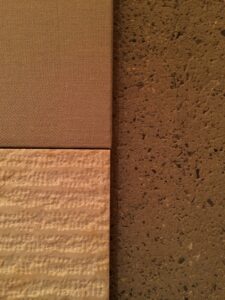
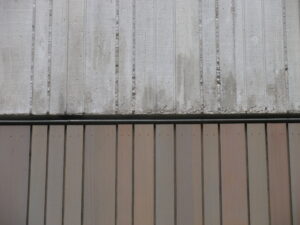
mills studio and the Owners are not looking to invent new materials or manufacturing processes, but are looking to give existing materials and processes new contexts and circumstances to exploit inherent characteristics. Looking at how projects and designers detail materials makes it clear that how a material is used and detailed is as equally significant as the choice of material. Authenticity of use is as important as what you use.
Products
mills studio and the Owners are directly inspecting, using, and operatig every product considered for inclusion in the DTS Project interiors. Appliances, fixtures, devices, and hardware are examined in in-situ conditions, at showrooms, at trade shows, or are ordered for extended evaluation. Along with documenting technical particulars with the manufacturer’s product data and test results, mills studio and the Owners are lookig to readily available on-line technical reviews by third parties and especially reviews by end users.
Product research begins with either identifying a circumstance to be addressed and searching for appropriate products, or when introduced to a product identifying the specific circumstance that the product will address. Currently, a myriad of products offer to improve our lives and well-being and some do just that, but many do not. It is critical to identify products that offer tempting claims but pointless or even detrimental outcomes. The well-defined architectural and design agendas provide a criteria to evaluate products – does it reinforce, implement, and make tangible the agenda or is it only an end in itself.
Built-ins
Built-ins include cabinetry, furniture, stairs, landings, guardrails, handrails, and other elements permanently attached to the building. Built-ins also include multiple materials as part of an assembly. Built-ins are particularly important because they establish the setting for the owners and time’s imprint on the interiors. The built-ins provide the aesthetic framework to which the owners add, subtract, and adjust to make the DTS Project House their home. The built-ins provide a criteria for the owners to judge their personal choices.
Much of the research related to built-ins is conducted to help determine how few and which built-ins are required to provide context and structure for the non-permanent interior elements. This research is best accomplished by experiencing and evaluating complete environments of all types and aesthetics. Residential, housing, retail, hospitality, and museum environments were all experienced, documented, and evaluated. Part of the research and analysis is looking at how specific design attributes across aesthetics best contribute to establishing a stable framework for individual actions.
Furniture
mills studio and the Owners visited buildings, showrooms, manufacturer’s stores, trade shows, and designer studios and scoured publications, advertisements, the internet, and websites to identify freestanding furniture pieces for possible inclusion in the DTS Project House interiors.
Once identified, mills studio and the Owners used every available resource to personally look at, touch and feel, sit on, sit at, lay on, lift, and otherwise fully experience every piece of freestanding furniture under consideration for the DTS Project House interiors.
Freestanding furniture pieces must fulfill defined functional, design, and technical characteristics as individual pieces, but also must act as part of an ensemble. It is the ensemble that has the most power to implement the architectural and design agenda. Since furniture evaluations are so often based upon personal histories, personal aesthetics, and personal judgements of comfort the architectural and design agendas have to account for not only community standards, but also personal expression. Thus, the interrogation (a term borrowed from Ilse Crawford of studioilse) of furniture pieces produces evaluations and judgements of both individual attributes and ability to combine with other pieces.
Details
Details is an expansive category that covers everything from accessories like towel bars and robe hooks to door stops to HVAC registers to the joints between materials to door and cabinet knobs to the juncture between furniture and building. Most pieces falling under the details category do not require a context to evaluate and judge, but actual fabrications must be experienced to assess the scale, finish, and functionality.
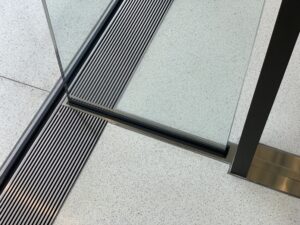
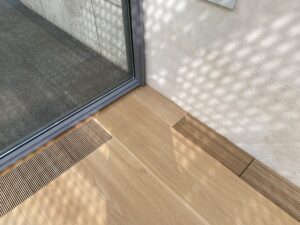
Technology
The technology that operates and monitors the DTS Project House is an integral part of the interior design directly affecting the aesthetic and user’s experience of the interiors. Screens and devices have a visual impact, user interfaces (switches, apps, and remotes) affect contentment, lighting and music affect mood, HVAC affects air quality and comfort, and alarm and camera systems affect psychological security – technology affects our physical mental, and emotional well-being. It is critical to approach technology with skepticism and only introduce it when its use will be positive to well-being.
The scientific and applied research for most technological aspects of the DTS Project House falls within the specialized research for each individual type of technology, with how each technology affects the user’s well-being falling within the interiors research. The interiors research evaluates technology based upon its qualitative effect on experiencing and inhabiting the DTS Project House.
The interiors research specific to wellness and well-being looks at how design, the brain, and neuroscience are intertwined. A definition of this developing area of inquiry known as neuro-architecture is basing architectural design strategies on a knowledge of the cognitive processes involved in how humans perceive and interact with their surrounding built environment. This knowledge can be used to achieve human well-being and improved health. The University of Pennsylvania’s Penn Center for Neuroaesthetics, led by Anjan Chatterjee, is a prime resource for mills studio’s research of this subject.
There are differences of opinion and emphasis on whether it is information or sensations that most inform human’s perception of their surroundings. mills studio believes that both information and sensations play a critical role in a healthy person’s perception and interaction with their environment. Understanding the potential effects of sensations and especially information is critical to properly integrating technology into interiors.
CASE STUDIES
CASE STUDY – SOFA
Couch with Mobile Backrests
Among the intentions for the interior design of the living and media areas of the DTS Project House is flexibility to accommodate varied functions and varied group sizes. mills studio considered options for how the space could reconfigure to work for the daily needs of a couple, accommodating a small group over to watch a movie or celebrate a birthday, and a large group attending a philanthropic event. But the design needs to not only solve macro functional issues, but also solve for micro issues. For instance: depending on the time of day, seating needs to focus on the sunset and then in the opposite direction toward the video screen and then a fireplace in still another direction. Sofas need to provide formal seating for conversation, lounging for movies, and also serve as impromptu sleeping arrangements for guests deciding to stay overnight.
Of all the design options considered, sofas with mobile or movable backrests were identified as the option to best implement the design intentions for the DTS Project House living and media wing. “Sofas” without permanent backrests can function as “benches” offering multiple orientations from a single stationary location by using or not using the mobile backrests; function as beds with the backrests removed for last minute unplanned overnight guests; and function as a traditional sofa arrangement using the mobile backrests. Mobile backrests make the individual sofas reconfigurable with differing orientations, but also make the ensemble of sofas reconfigurable as the sofas can now be conjoined in any pattern since all four edges are uninhibited by a permanent backrest. Minus the weight and bulk of permanent backrests, the sofas are also now more mobile themselves and thus more easily moved and reconfigured. The mobile backrests also turn the entire floor plane into a potential sofa.
The ”sofas’ are made up of a couch / daybed upholstered structure and a mobile backrest. Each of these elements is its own research project. The research commenced with investigating current offerings of the couch and backrest as a set or at least each offered by a single manufacturer. mills studio and Warren and Susan inspected and experienced the products of manufacturers targeting niche markets, such as Roche Bobois, targeting mass markets, such as IKEA, and every market in between.
It was quickly apparent that the couch element required no real innovation to fulfill its function and could be evaluated solely on size, proportion, shape, quality of construction detailing and the resulting aesthetics, textile opportunities, and cost. It was also determined that there was no compelling reason not to custom fabricate the couches so as to precisely meet our functional and aesthetic specifications.
Contrary to the couches, the mobile backrests do require significant innovation to fulfill their function. The backrests must perform two seemingly contradictory tasks: easily mobile but does not move when leaned against. The backrest must not slide or tip over so it provides the same support as a permanent backrest. The backrest must also be ergonomic while remaining stationary and not compromise the aesthetics to fulfil the functional requirements.
Thus, each backrest was evaluated for how it how it made itself slip resistant: what material did it use on its bottom and did the couch material make a difference in the backrest’s slip resistance? Was the slip resistant bottom material permanently attached or was it part of a removable, cleanable fabric wrapping? Is the backrest weighted in any way to make it more stable? Does the backrest deform over time with the weight of the human body pressing against it? How easy is it to clean the backrest’s textile coverings. How do any zippers work and what material are the zippers made of? Will the textiles, zippers, and slip resistant surfaces hold up over time?
Although the various backrests used different approaches, technologies, and aesthetics to achieve the same basic function, it became clear that a successful backrest was the result of an extensive research and trial and error process that we should not try and duplicate. Thus, it was decided that a custom backrest was not a consideration. A manufacturer’s existing backrest offering was the viable option. It is an option to customize the textiles and provide the final upholstery com – customer’s own material – so the textiles are their own research project.
CASE STUDY – BENCHES
Various potential locations for benches were identified in the schematic design process so benches are among specific design elements that were researched in-depth with extensive documentation and detailed analysis and evaluation. mills studio endeavored to assess as diverse a field of benches as possible including freestanding and built-in benches; benches designed for no context and benches designed for a specific context; benches inspired by a specific context but appropriate for other contexts; and benches constructed of varied materials.
mills studio and the owners looked at as many benches in context as possible and sought non- residential contexts. Among the goals for deciding which elements and materials to install in the DTS Project House is sustainability with its many general and specific aspects. Thus, it made sense to seek out and evaluate benches designed and constructed to withstand public use in commercial, hospitality, gallery, and museum environments. The benches in artistic venues are of particular interest because they generally use aesthetic means to address functional requirements and issues of public use.
Commercially available benches were evaluated for comfort, aesthetics, fabrication details, mobility, ability to conjoin or expand, maintenance, durability, cost, and reinforcement of architectural agenda. mills studio also looked at what improvements could be made to existing benches to make them optimal the DTS Project House agenda. Benches designed for a particular context, whether freestanding or built-in, were analyzed for if and how their context affects the design and fabrication, how the benches reinforce or distract from the building’s architectural intentions, and how it might inspire custom designs for the DTS Project House.
Have nothing in your house which you do not know to be useful or believe to be beautiful.
~ William Morris


